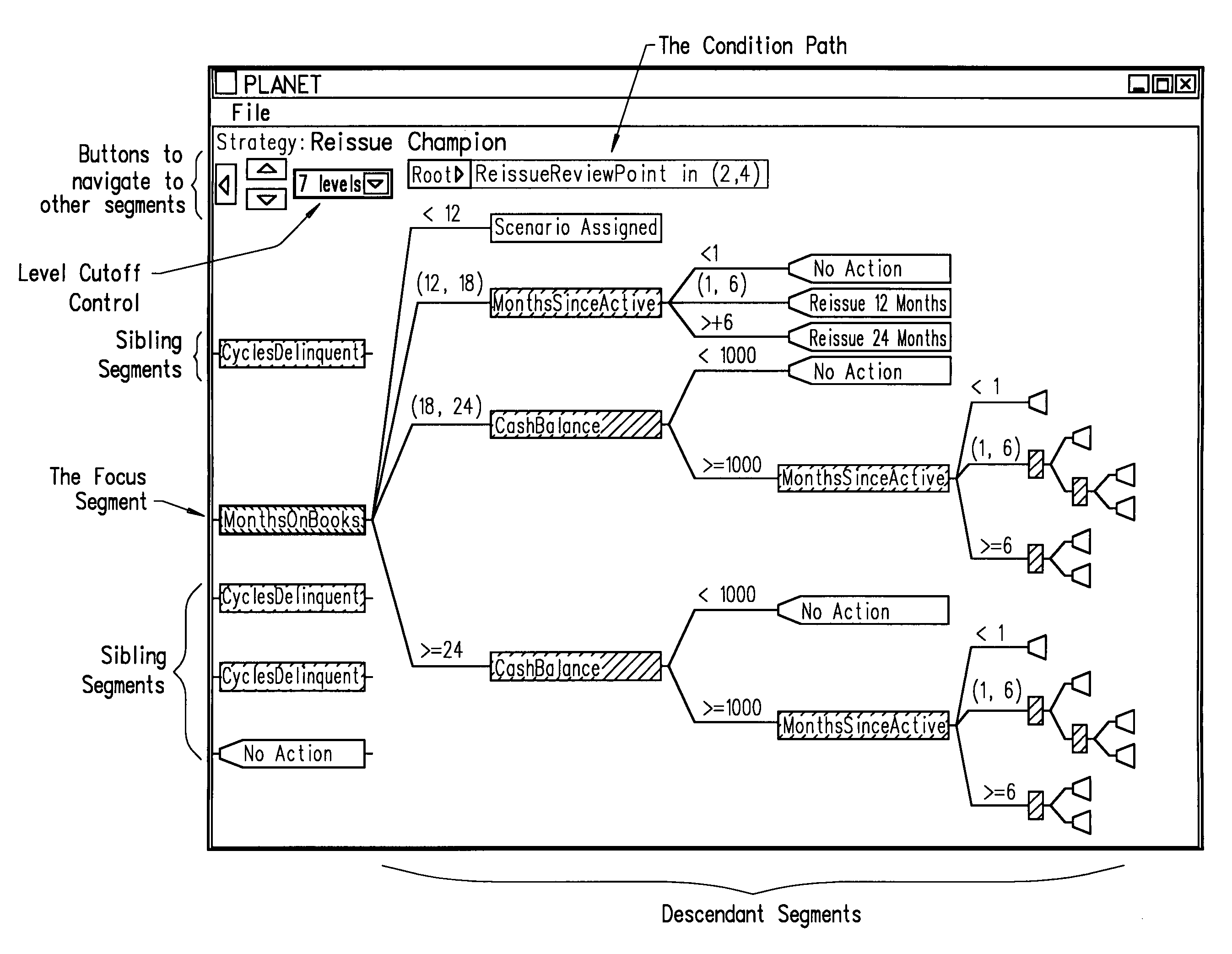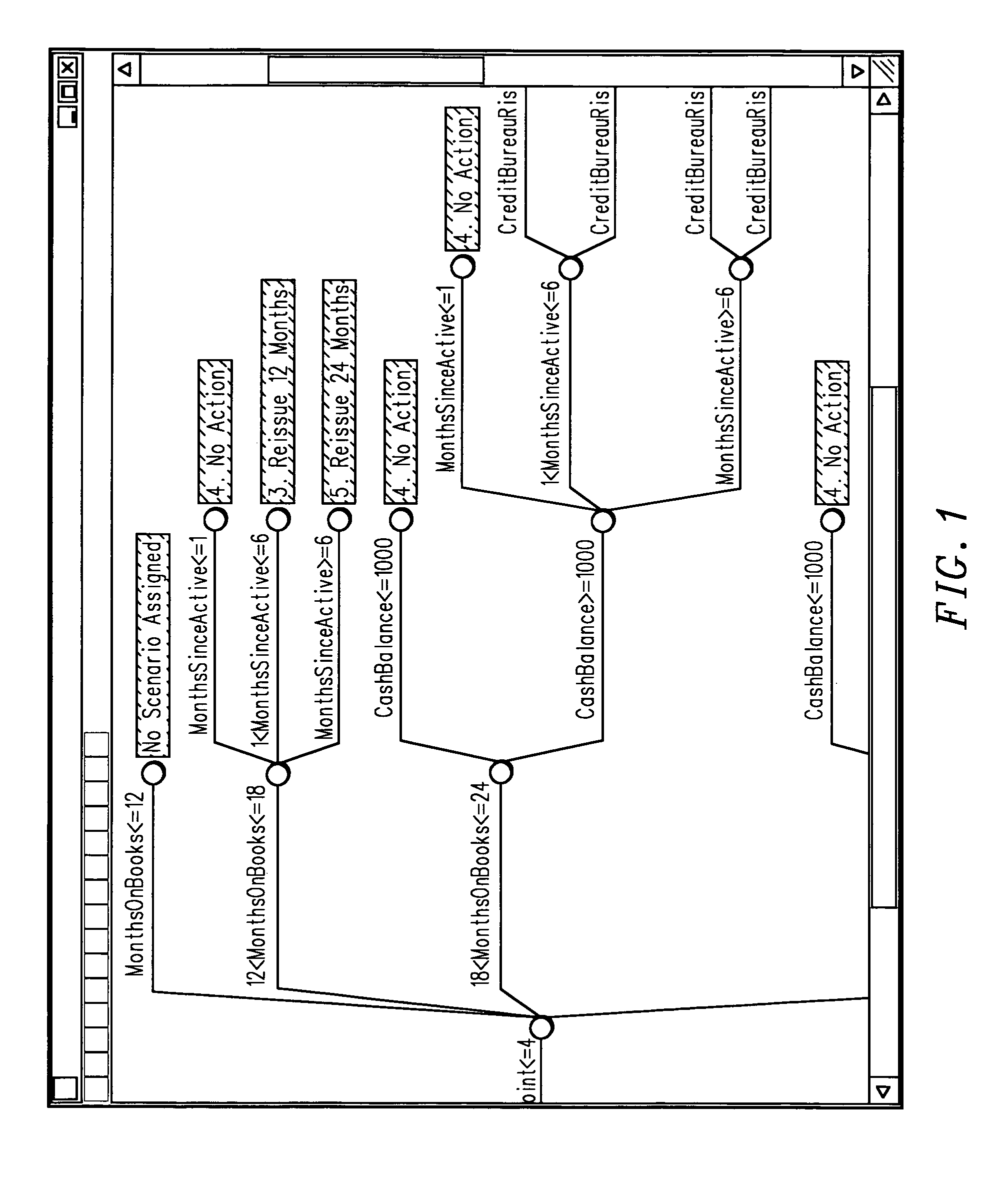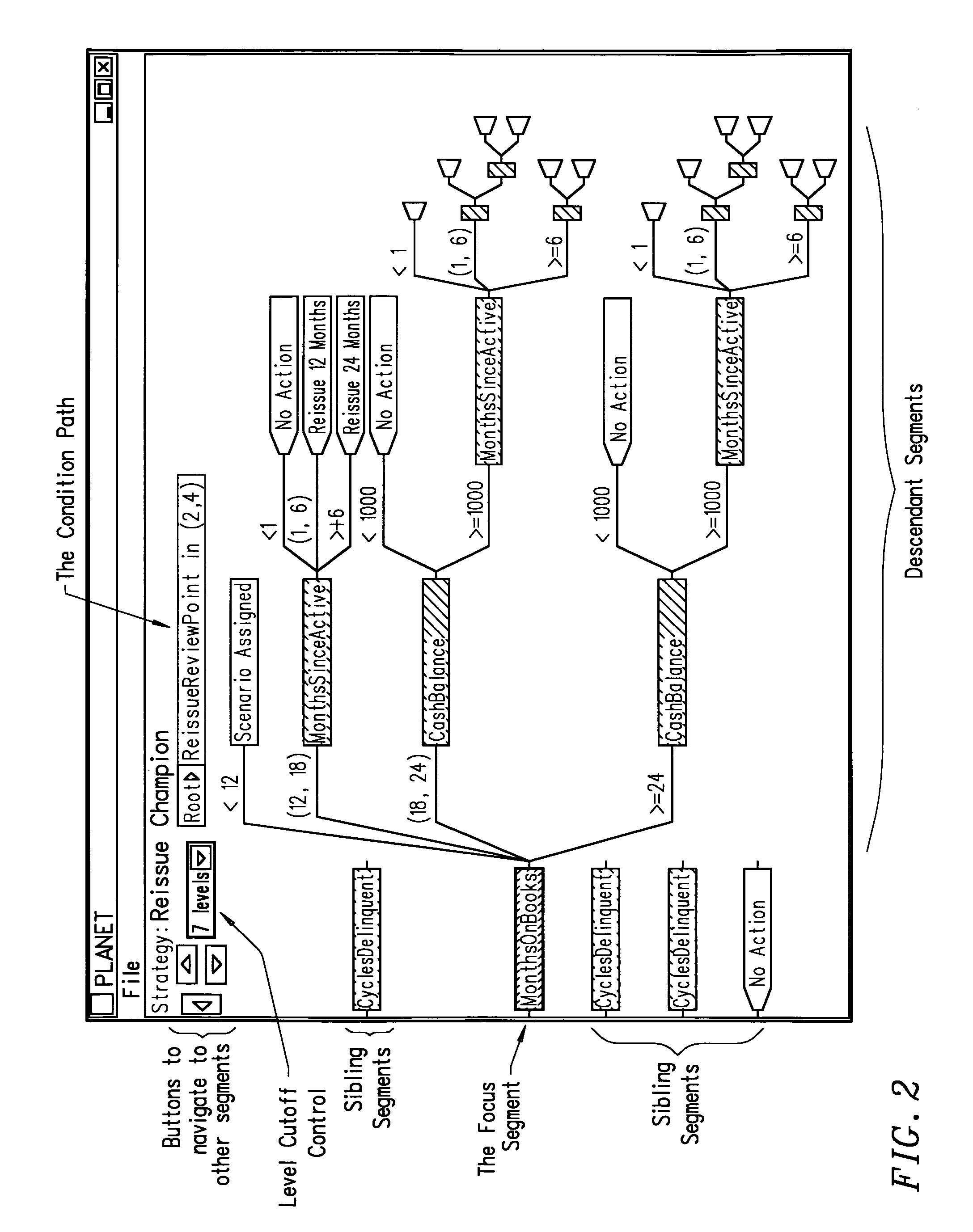Methodology for viewing large strategies via a computer workstation
a technology of computer workstations and large strategies, applied in computing, instruments, electric digital data processing, etc., can solve the problems of many existing tools not being able to display certain kinds of strategies, not being able to navigate using existing methodologies,
- Summary
- Abstract
- Description
- Claims
- Application Information
AI Technical Summary
Benefits of technology
Problems solved by technology
Method used
Image
Examples
Embodiment Construction
[0030]The invention herein draws from the design principles of the field of information visualization, advocated by E. Tufte, The Visual Display of Quantitative Information, Graphics Press (February 1992), and specifically makes use of display techniques such as fish-eye views (see, for example, G. Furnas, Generalized Fisheye Views, Human Factors in Computing Systems CHI '86 Conference Proceedings, 16–23 (1986).
Design Principle 1: Make it Very Quick and Easy to Select which Portion of the Strategy is Displayed on Screen.
[0031]In traditional approaches to displaying a strategy, the whole strategy is rendered on a canvas. A portion of the strategy is selected for display by moving about a rectangular viewing area over the canvas with scroll bars. The portion of the strategy underneath the viewing area is displayed on screen. With this approach, it is common for bits and pieces of multiple strategy branches to appear on screen at once with none of these branches shown in their entirety...
PUM
 Login to View More
Login to View More Abstract
Description
Claims
Application Information
 Login to View More
Login to View More - R&D
- Intellectual Property
- Life Sciences
- Materials
- Tech Scout
- Unparalleled Data Quality
- Higher Quality Content
- 60% Fewer Hallucinations
Browse by: Latest US Patents, China's latest patents, Technical Efficacy Thesaurus, Application Domain, Technology Topic, Popular Technical Reports.
© 2025 PatSnap. All rights reserved.Legal|Privacy policy|Modern Slavery Act Transparency Statement|Sitemap|About US| Contact US: help@patsnap.com



